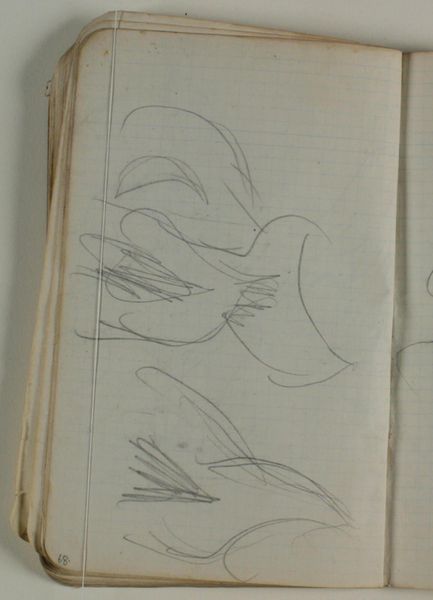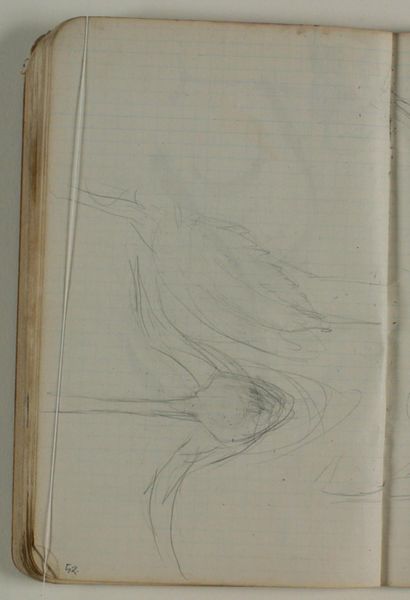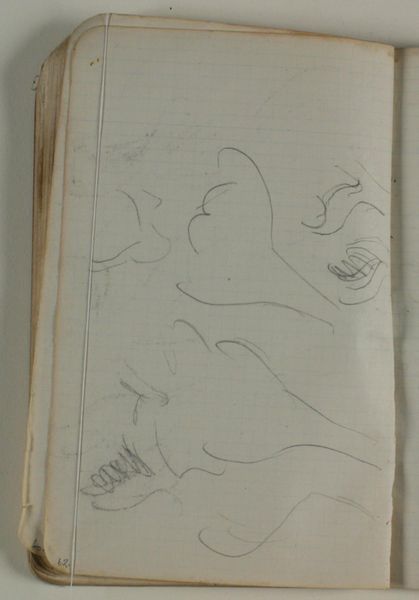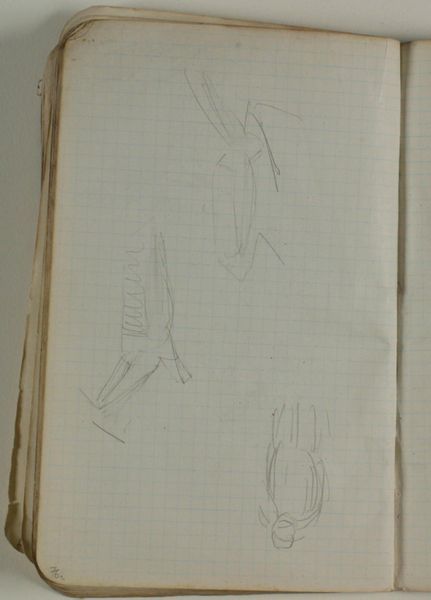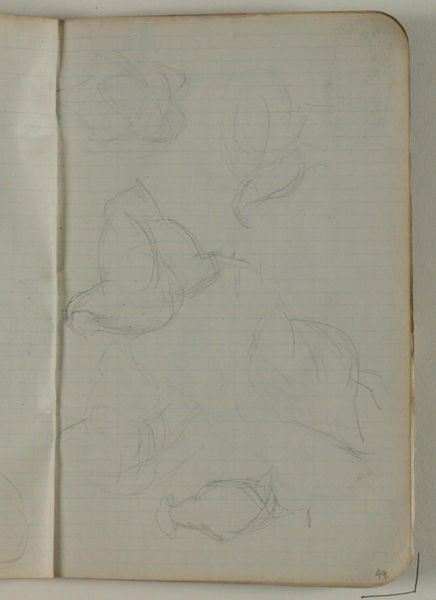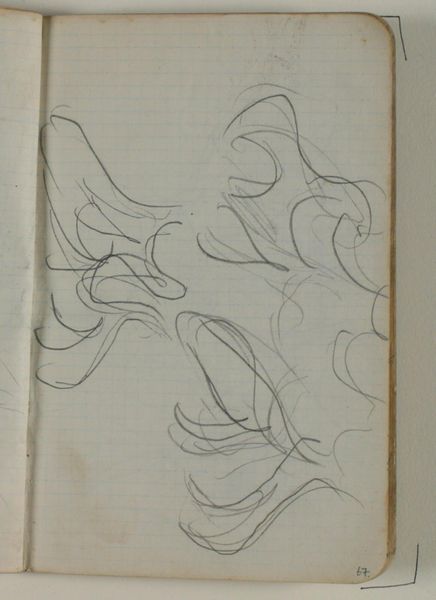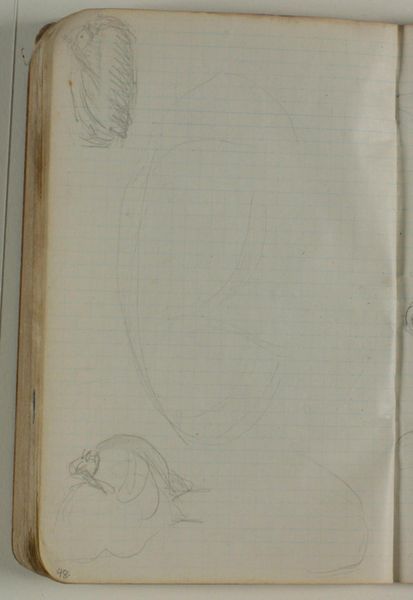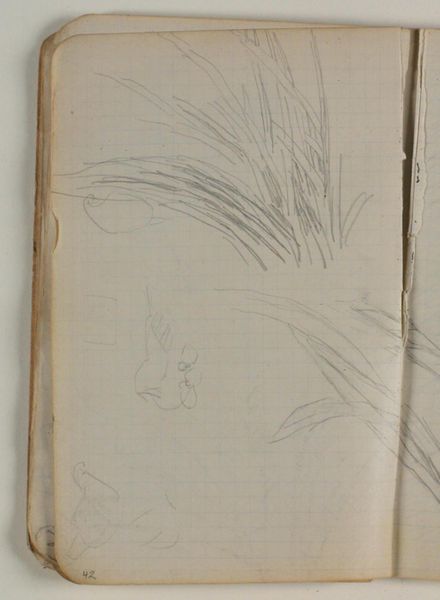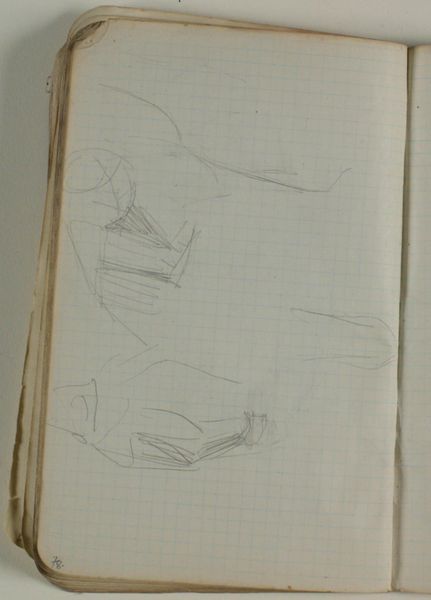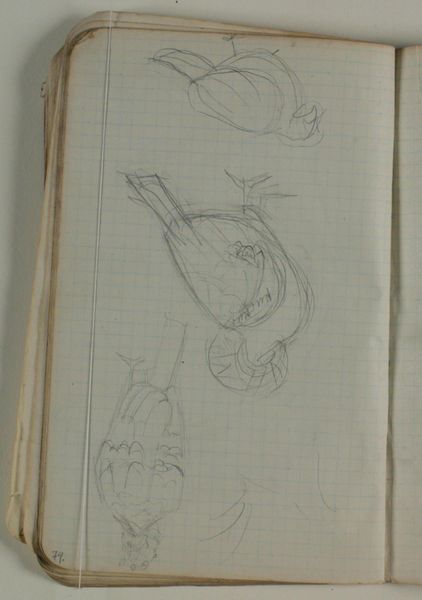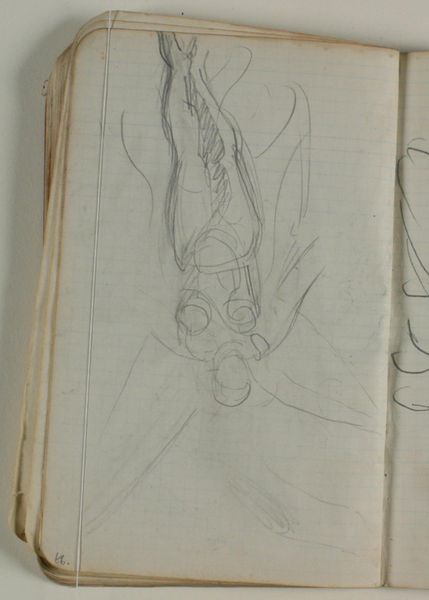
drawing, dry-media, pencil
#
drawing
#
dry-media
#
pencil
#
abstraction
#
line
Dimensions: 175 mm (height) x 110 mm (width) (bladmaal)
Curator: Here we have "Loose Sketches" by Niels Larsen Stevns, created between 1900 and 1905. It's a drawing in pencil, housed here at the SMK. What strikes you about it initially? Editor: It feels so minimal, almost fragile. Just these few pencil lines on lined paper. I wonder what he was thinking, what his intent was? Was this preparation for a larger piece, or a doodle? Curator: That’s precisely what intrigues me. In terms of labor and material, the deliberate choice of inexpensive materials like pencil and commonplace notebook paper complicates its potential value as an object of high art, versus its value in process, as labor. It almost invites us to see artmaking as a daily practice, available to all, rather than some grand, inaccessible gesture. Editor: Yes! There’s something inherently democratic about using these everyday materials. Perhaps Stevns aimed to democratize art by displaying sketches done with tools accessible to all members of society. From a materialist perspective, the lines created by the artist’s pencil suggest freedom because any observer with a writing utensil is granted this capability of creating, rather than being limited to an exclusive realm of talented trained professionals. But let's think about what "abstraction" might have meant to him and his contemporaries, and its relationship to identity in the period. How did artists of his generation see abstraction fitting into larger cultural narratives, questions of nationalism, and gender? Curator: Exactly! It disrupts that patriarchal narrative of art as the unique province of the skilled (usually male) master, positioning art-making more horizontally, where anyone can experiment, regardless of gender, race, or formal training. The absence of identifiable forms also invites an exploration of the subjective experience—art becomes about feeling, intuition, about transcending representational limitations in an era defined by change. Editor: And from the look of it, these simple, unrefined lines almost look like industrial tool paths and architectural drawings of contemporary facilities rather than representational objects. Do you suppose that society had to transition and redefine what should and should not be art to accommodate this abstract, minimalist take? Curator: Definitely, this pushes viewers beyond conventional interpretation, challenging power dynamics ingrained in how we value certain styles. "Loose Sketches," in all its understated presence, opens space to reconsider art history with a decidedly contemporary lens. Editor: Yes, viewing these lines not just as a means, but an end, gives more prominence and focus on the means of art creation. The piece inspires observers to embrace their inner freedom and creativity by allowing them to associate their personal impressions on it.
Comments
No comments
Be the first to comment and join the conversation on the ultimate creative platform.
